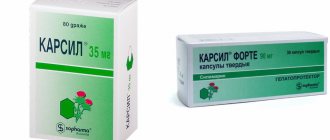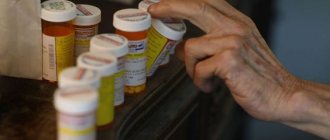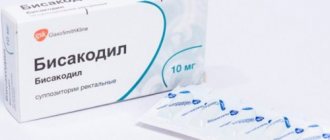DPT – vaccination against whooping cough, diphtheria and tetanus. Providing comprehensive protection against the above diseases, it is administered in parallel with the administration of the polio vaccine/administration of an immunobiological drug orally. According to the NKPP, this type of immunization is included in the list of mandatory ones. Reason: diseases the development of which is prevented by vaccination are accompanied by severe consequences and have a high risk of death. So, in particular, before the introduction of vaccination, the mortality rate from tetanus was 90%, from diphtheria - 25%.
Diphtheria
Diphtheria is a bacterial infection characterized by specific changes in the oropharynx and a pronounced toxic syndrome. Diphtheria is transmitted by airborne droplets (from a patient or a carrier during breathing), less often by contact (from contaminated objects). Infection occurs approximately 2-10 days from the moment of contact.
Diphtheria is characterized by pronounced changes in the oropharynx. The throat turns red, then becomes covered with a dense fibrin film, which is difficult to separate from the mucous membranes, and sometimes makes breathing difficult. Diphtheria of the larynx is accompanied by hoarseness and loss of voice, difficulty breathing, and in some cases bleeding.
The diphtheria bacillus is an infectious agent that can produce a toxin. Under its influence, a toxic syndrome develops in the body - swelling of the upper respiratory tract and subcutaneous fat. At the same time, patients feel clearly unwell: high fever, difficulty breathing, headaches. In addition, the disease is often complicated by myocarditis and pathology of the nervous system (encephalitis). To treat diphtheria, antibiotics are used, as well as antitoxic serum or immunoglobulin.
Diphtheria is now rare. It's not very contagious. But this disease is serious, and in the pre-vaccination era it was in first place as the cause of child mortality.
Possible side effects
"ADS" toxoid is one of the least reactogenic drugs. Some vaccinated people may develop short-term general (fever, malaise) and local (pain, hyperemia, infiltration, swelling) reactions in the first two days. Considering the possibility of developing immediate allergic reactions (Quincke's edema, urticaria, polymorphic rash, anaphylactic shock) in particularly sensitive individuals, vaccinated persons must be provided with medical supervision for 30 minutes. Vaccination sites must be provided with anti-shock therapy.
Come get vaccinated at MiracleChildren. A full range of vaccines for children and adults, family vaccinations - at a special price!
Whooping cough
Whooping cough is an infectious disease transmitted by airborne droplets. It manifests itself as a prolonged, intense, obsessive cough. The incubation period for whooping cough lasts from 1 to 2 weeks. After the disease develops, the patient can be a source of infection for up to a month. In addition, asymptomatic carriage is possible.
In children under one year of age, whooping cough infection often leads to attacks of respiratory arrest. And against this background, complications develop from the nervous and cardiovascular systems. In older children, the disease begins with the symptoms of a common cold: fever, runny nose, cough, redness of the throat. Then a long, painful paroxysmal cough develops. Attacks are sometimes accompanied by vomiting, hemorrhages in the skin of the face and conjunctiva, saliva and lacrimation, and swelling of the veins of the neck. This cough can last up to six months.
Antibacterial drugs are used to treat whooping cough. However, they can be effective only in the initial period, when whooping cough is almost impossible to distinguish from other acute respiratory viral infections. During the period of paroxysmal cough, antibiotic therapy is not effective. Treatment is carried out symptomatically and has virtually no effect on the duration of the cough.
Whooping cough is extremely contagious. It affects up to 95% of unvaccinated contacts. Even now, against the backdrop of universal vaccination, cases of whooping cough are not uncommon. The disease is especially dangerous in children who have not yet had time to get vaccinated for some reason.
To vaccinate or not?
The issue of childhood vaccinations causes perhaps the most heated debate among modern parents. “Vaccinators” appeal to the fact that vaccination is the only proven way to train the immune system to fight deadly infections, and it is obviously safer than a previous illness. “Anti-vaxxers” point out the unwanted side effects that are possible with vaccination. In fact, blindly following everything that is prescribed at the district clinic and categorically denying all the achievements of modern medicine are equally meaningless. Most parents would still like to make a balanced, informed decision. This means that each specific vaccine should be considered separately.
In this case, we are talking about vaccinating a child under one year old against whooping cough, diphtheria and tetanus. Is vaccination aimed at preventing these diseases justified?
Tetanus
Tetanus is a severe bacterial infection with a contact transmission mechanism, which is characterized by damage to the nervous system with the development of convulsions and tonic muscle tension. The infection is transmitted by contact. The microbe is widespread in nature, especially in agricultural areas. It is found in soil, water, and house dust. Often it is an inhabitant of the intestines of animals, sometimes humans. Tetanus bacillus can form spores that are resistant to high and low temperatures and antiseptic solutions.
The tetanus bacillus acquires its pathogenic properties in the absence of oxygen (anaerobic environment). Getting into the wound from contaminated surfaces, the microbe begins to multiply and release a toxin. The toxin enters the nervous system through the blood. The clinical picture is developing. From infection to the first symptoms it takes approximately 1 to 3 weeks. Initially, the muscles of the face and head are affected - a sharp muscle spasm occurs. Then the changes spread to the trunk and limbs, and convulsions appear. Muscle contractions can be so intense that they injure joints and ligaments. Damage to the muscles of the heart and respiratory tract is common.
In modern conditions, the patient dies from tetanus in approximately 20% of cases. The infection is especially dangerous in children of the first year of life. Mortality reaches 90-95%. Timely treatment can reduce mortality and reduce the manifestations of the disease. However, even with its use, recovery occurs only after 2-4 months; some consequences remain irreversible for the nervous system.
Tetanus is a very dangerous infection. It is still not uncommon to encounter tetanus bacillus spores in nature.
What vaccinations are there for whooping cough, diphtheria and tetanus?
- DTP is the most widely used vaccine in our country. It includes toxoid (neutralized toxin) of tetanus and diphtheria, as well as killed pertussis bacteria. In addition to the main components, the vaccine includes adjuvants, antiseptics and preservatives, as well as the main medium - a diluent.
- ADS and ADS-M are vaccines without a pertussis component. The ADS-M vaccine contains a reduced amount of diphtheria toxoid. These vaccines are used for revaccination in children after 7 years of age and in adults when whooping cough vaccination is no longer indicated.
- “Bubo-Kok” - in addition to the DTP components, this vaccine contains part of the hepatitis B viral protein. This is done in order to avoid giving the baby two injections at the same time, because Vaccinations according to the calendar are done together.
- "Bubo-M" is a vaccine without a pertussis component.
- "Pentaxim" - contains tetanus, diphtheria and pertussis toxoids, particles of the pertussis microbe. Additionally, polio has been added to this vaccine for ease of use. According to the vaccination calendar, the DTP and polio vaccination schedules coincide. A component against Haemophilus influenzae can be added to this vaccine from a separate vial. The decision about the need to administer it is made by the doctor. The vaccine is distinguished by the absence of whole pertussis cells - this causes fewer side effects.
- "Infanrix" is identical in composition to "Pentaxim", with the exception of the polio component - it is absent in it.
- "Infanrix hexa" - in addition to the components of "Infanrix", includes inactivated polio viruses and part of the hepatitis B virus protein.
- "Adasel" - includes: diphtheria, tetanus, pertussis toxoids and fragments of pertussis bacteria.
Vaccine effectiveness
Introduction in 1994 of mass immunization of the country's population against diphtheria with repeated revaccination of adults in 2003-2004. made it possible to provide sufficient specific protection of the population from this infection. Together with many years of surveillance, this led to a decrease in the incidence of diphtheria in Russia from 26.8 in 1994 to 0.01 per 100 thousand population in 2009-2011. During the period 1980-2000. The total number of reported cases of diphtheria has been reduced by more than 90%.
All components of DTP vaccines are capable of forming immunity in almost 100% of vaccinated people.
When is DTP vaccination given?
According to the national calendar, DPT vaccination is given at 3 months, 4.5 months and 6 months. Revaccination is done at 18 months. The second revaccination at 6-7 years is carried out without the pertussis component. The third - at the age of 14, and then every 10 years - also without adding the whooping cough component.
What to do if the DPT vaccination was not done on time?
If vaccinations are not completed, the calendar is continued at the same intervals indicated in the calendar. The second vaccine is given no less than 1.5 months after the first. The third is no less than 1.5 months from the second. Revaccination at least 12 months after the last vaccination.
DTP vaccination is given up to 4 years of age. After 4 doses, DTaP is given (in this case, the interval between the third vaccination and revaccination can be reduced to 6 months).
"Infanrix hexa", according to the instructions, is only done up to 36 months.
"Infanrix" and "Pentaxim" can be done up to 6 years.
"Adasel" is used only for revaccination at 6-7 years of age and for vaccination in adults every 10 years.
Children over 6 years of age are vaccinated only with pertussis-free vaccines (ADS, ADS-M, Bubo-M) or the Adasel vaccine. They receive two vaccinations 1.5 - 2 months apart. Revaccination after 9-12 months. And the second revaccination after 2 years.
Preparation
All types of vaccines, both domestic and imported, containing diphtheria toxoid, are administered intramuscularly. Before vaccination, it is not recommended to introduce new complementary foods into the diet, or visit crowded places.
The doctor will tell you about all the features and limitations of the post-vaccination period at your appointment. The Miracle Doctor clinic provides immunization against diphtheria with a preliminary examination by a specialist using vaccines from leading foreign manufacturers.
Sign up for a consultation by phone or on the clinic’s website.
What complications can occur after DPT vaccination?
DTP is one of the most reactogenic vaccinations in the calendar. Should we be afraid of it and refuse it?
Indeed, after the administration of DTP, adverse reactions often occur:
- An increase in body temperature to 38.5*C occurs in approximately half of the cases after injection of the DPT vaccine. When using acellular vaccines (Prevenar, Infanrix or Adasel), it occurs approximately 2-3 times less often. Less common is an increase in temperature to 39*C (about 10% of cases). Extremely rare - up to 40*C (less than 0.5% of all vaccinated people). This increase in temperature goes away 1-3 days after vaccination on its own and only requires the use of an antipyretic drug in an age-appropriate dose to improve the child’s well-being.
- Irritability and prolonged crying. Also quite common. For DPT, approximately 40% of all vaccinations. For acellular vaccines, this percentage drops to about 15%. It goes away on its own in 1-2 days. Requires only observation and care of the baby.
- Local reactions in the form of swelling, redness and pain at the injection site occur with varying intensity in approximately half of those vaccinated. Local reactions are observed much less frequently in those vaccinated with acellular vaccine. Pain in the first days after vaccination can be reduced with the help of the same medications that are used to bring down a high fever. If redness, swelling and pain increase, and the drugs turn out to be ineffective, it makes sense to show the baby to the doctor in order not to miss complications associated with infection of the injection site, or violation of the drug administration technique.
- Sometimes, for several days after vaccination, the baby is worried about loss of appetite and, as a result, weight loss. This phenomenon is temporary and does not require correction.
- Vomiting occurs in approximately 15% of vaccinated children. It is never painful, repeated or long lasting. Does not require treatment. But you should notify your doctor about such a reaction.
- Rarely (approximately 0.02% for DTP and even lower for acellular vaccines) febrile seizures occur in children after vaccination. Such convulsions occur at elevated temperatures. More often, children have a congenital predisposition to the development of such seizures. Vaccination in such situations serves only as a provoking factor. In most cases, febrile seizures are not dangerous for the baby, although they are very frightening for parents. After a seizure, a child must be seen by a doctor. And warn your doctor about previous cases of such an adverse reaction.
Severe and rare complications after vaccination include:
- Acute allergic reactions. Immediately after vaccination, mother and baby are recommended to spend about half an hour within the walls of a medical institution.
- Hypotensive-hyporesponsive syndrome. The risk is present approximately in the first 12 hours after vaccination. The child suddenly turns pale, becomes lethargic and lethargic. This complication does not require treatment, it goes away on its own, but it requires medical supervision. Hypotensive-hyporesponsive syndrome after DPT vaccination raises the question of further vaccination.
To reduce the risk of severe adverse reactions, examination before vaccination is recommended. Before vaccination, the child should not be sick with an acute respiratory infection. Chronic diseases must be in remission. If necessary, the attending physician can prescribe treatment for a child with a chronic disease during vaccination.
It must be said that the subsequent vaccination is more difficult to tolerate than the previous one. In children with severe reactions, it is advisable to replace the vaccine with an acellular one or one that does not contain the pertussis component.
How to prepare for Infanrix vaccination
The likelihood of adverse reactions occurring, as well as their severity, can be reduced by preparing for vaccination. First, you need to make sure that the child is healthy. Even a mild ARVI without fever is a temporary contraindication to vaccination. If the child is healthy, but one of the relatives who had contact with the child for several days before vaccination is sick, it is also better to reschedule the vaccination.
It is better to reschedule the vaccination if it is very hot outside or, conversely, very cold. In general, gentle conditions are indicated on the day of vaccination and for several days after. Stressful factors, including walking in the heat and cold, must be excluded.
It is recommended not to overload the stomach on the day of vaccination; vaccination should be done at least an hour after meals. On the day of vaccination, new complementary foods should not be introduced. It is recommended to pay attention to whether the child had bowel movements during the day before vaccination, and if not, give him an enema to help empty his bowels.
On the day the vaccination is scheduled, you can give your child an antihistamine.








